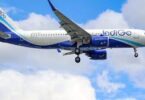Monitoring Desk
The frightening and tragic accident on a Southwest Airlines flight on Tuesday, in which one passenger died, is an uncomfortable reminder to always pay attention to those pre-flight safety instructions.
Except for a few minor injuries, the other passengers on the flight were safe and were instructed to use their oxygen masks after the incident. Photos of passengers started circulating shortly after the accident, and it’s pretty easy to see what’s wrong with this picture.
Many of the passengers did not seem to know how to properly put on their oxygen masks, putting their safety and health at risk. It can be difficult to remember what to do in an emergency, which makes it all the more important to pay attention to safety instructions at the beginning of every flight.
Pull the mask toward you, place it over your NOSE AND MOUTH! Secure the elastic band and breathe normally
At tens of thousand feet in the air, the air is thinner and there’s less oxygen, so plane cabins use a pressurized system to help people breathe normally. Southwest Flight 1380’s engine malfunctioned at 32,000 feet, causing a window to break and damage to the plane’s fuselage. This also caused a drop in cabin pressure, which, if you’re familiar with pre-flight safety presentations, makes the oxygen masks on most commercial jets drop from above.
If you ever find yourself in a situation in which you have to use one of these masks, it’s important to remember to always cover both your nose and mouth with the mask, using the elastic straps to tighten it. The mask does not need to be perfectly tight to provide oxygen. Even if the mask seems like it is too small or just more comfortable fitted only on your mouth, using it in this way could affect how much oxygen you get.
According to the FAA, the masks are capable of giving passengers enough oxygen to prevent oxygen deficiencies in emergencies up to 40,000 feet, SF Gate reported. However, this is only true when used properly. Breathing only through your mouth can block a sufficient flow of oxygen to your lungs.
Think of it this way: When you’re hyperventilating, one of the first things you’re told to do is calmly breathe through your nose. The nose is actually the main, direct pathway to the lungs. Using your nose to breathe also creates greater air pressure and gives the lungs more time to extract oxygen from the air, according to Livestrong. Mouth breathing is considered inefficient, and can actually cause hyperventilation, rather than prevent it.
Hopefully, you’ll never have to use the skills provided in pre-flight safety presentations. But just in case, make sure you pay attention on your next flight.






